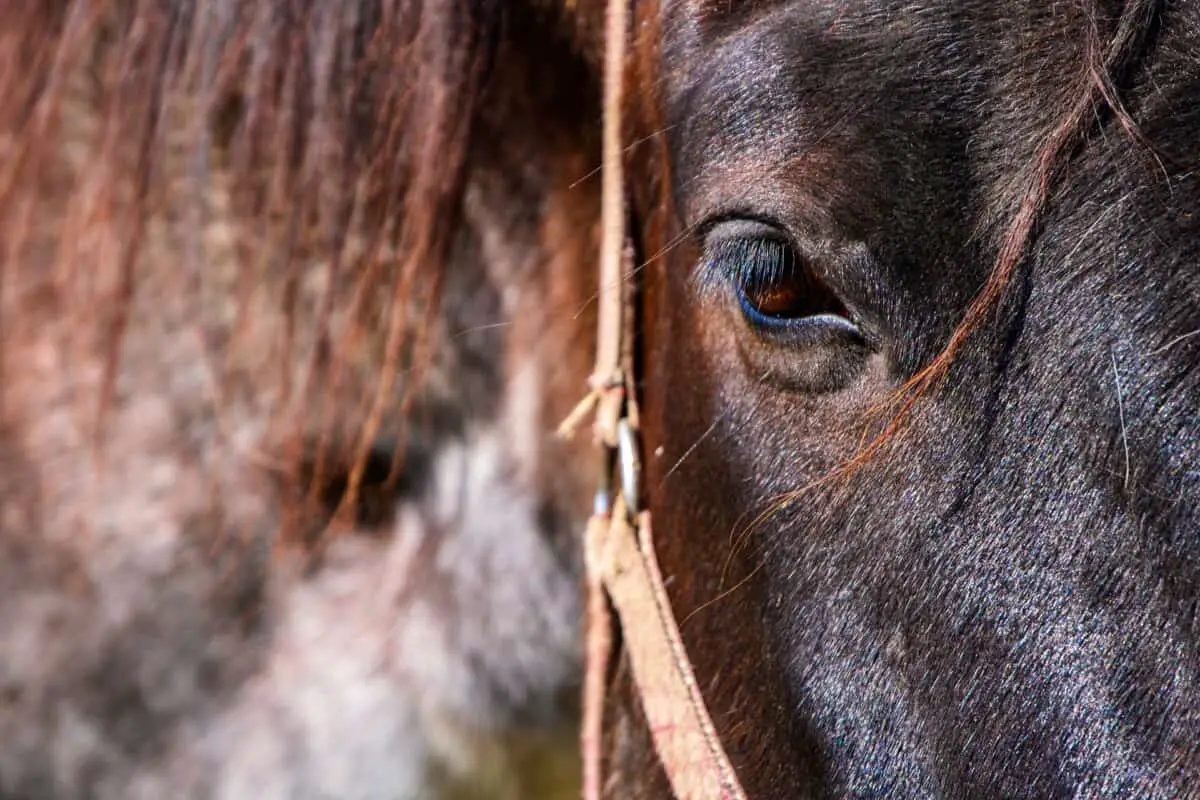Skip To Section
Horses can see in color but not as good as humans. While horses have been domesticated for centuries, it is hard to ascertain all the colors they see.
For animals to see colors, they must have receptors that respond to different colors. Photoreceptors located at the back of the eyes (in the retina) are responsible for seeing color.
Humans have cone cells that offer three color systems. A microscopic examination of a horse’s eye shows horses have two cone cells (dichromatic color vision) suggesting they should see color. However, they are obviously limited in this regard when compared to humans.
Studies show that animals with dichromatic color vision like horses can see some colors. What’s more, they can’t distinguish between many colors that humans see i.e., green, orange, red, etc., unless those colors differ in brightness.
What Colors Do Horses See Best?
Studies done suggest that horses can see blue the best. In one such study involving four horses, the subjects were able to identify blue correctly 85% of the time. Horses are also able to identify green with relative ease. While horses can identify yellow, they can’t do so as well as other colors like blue and green.

Which Color Is The Hardest For Horses To See?
The same study suggests that horses have a problem identifying red.
Can Horses See The Color White?
Horses can see yellow and blue as separate colors. However, when presented an image with both colors, they perceive such an image as white or gray. Horses don’t see complementary color. Since they are dichromatic, their two cone cells don’t show any color when stimulated equally.
What Does A Horse’s Vision Look Like?
A horse’s vision is similar to that of a colorblind person. Individuals who are red-deficient can’t see red-purple. Studies have shown that horses have a problem distinguishing brown and green backgrounds. They also can’t recognize blue-purple or red-purple on a grey background. These findings are consistent with those done on people with green and red color deficiencies. However, horses can identify yellow-green dots made on grey dotted backgrounds. It’s therefore accurate to conclude that horses aren’t blue color deficient.
We can also conclude that horses see things the way people with red-green color deficiency do. Green, yellow, orange, and red probably appear the same to horses. However, this doesn’t make them limited in any way in regards to vision. It’s likely that horses use visual cues like hue variation, depth, and brightness to see color better.
Color aside, horses have near 360-degree vision. As prey animals, they have adapted to spot predators from all directions. Unlike humans who have eyes on the front, horses have eyes on either side of their head. They can see all-round but can’t see something directly in front or behind. Horses may negotiate narrow bridges or other obstacles while effectively blind. However, they have large retinas that offer good peripheral vision. A simple turn will allow a horse to focus perfectly on anything.
How Do Horses See At Night?
Horses may not be able to see all colors vividly as humans do; however, they see much better than humans in the dark. Part of the reason behind this is their eyeballs pick up more light. This is evident when you take a picture of a horse’s eyes at night. Equine eyes look whitish because they have a membrane (tapetum lucidum) that aids their night vision. The membrane also reflects light making it possible for them to withstand a bright flashlight with ease.
Summary
Horses can see color but not as good as we do. We may be tempted to think animals see like we do. However, studies have identified notable differences. The structure of a horse’s eyes is different, which introduces differences in vividness, color, and visual field. But horses compensate for this with great night vision and great peripheral vision. So, don’t feel sorry for your horse. He/she sees better than you at night and has a greater field of vision because his/her eyes are on the side.
In regards to color, horses see like colorblind humans. Your horse won’t be able to see color red. But he/she can see greens and blues. So, a red apple or bright orange carrot appears greenish or brownish to your horse, but he will love it anyway.
